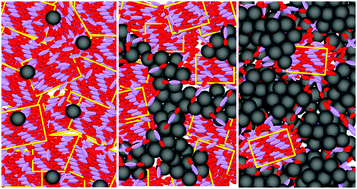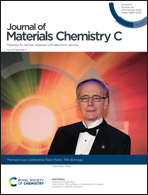Charge generation mechanism tuned via film morphology in small molecule bulk-heterojunction photovoltaic materials†
Abstract
Small organic molecules have emerged as promising component materials for organic photovoltaic devices. Compared to most conjugated polymers for the same application, small molecules have unique morphologies that promote electronic processes relevant to organic solar cell (OSC) function that can be significantly different from those of conjugated polymeric materials. Here we investigate constituent loading-dependent effects on OSC morphology and function using the classical fullerene acceptor, PC61BM, in a heterojunction blend with the small molecule donor, NDT (thiophene-capped diketopyrrolopyrrole naphthodithiophene). The evolution of active layer morphology as well as exciton speciation and dynamics as a function of the PC61BM content are examined in combined structural studies using GIWAXS and spectroscopic studies using transient absorption spectroscopy. We observe evidence for three types of coexisting excitons and details of the interplay between them determines the yield of charge separated states that afford sustained device efficiency.

- This article is part of the themed collection: Celebrating Tobin Marks’ 75th Birthday


 Please wait while we load your content...
Please wait while we load your content...